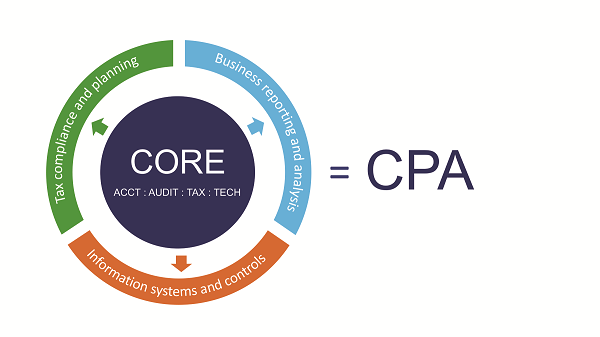Subscribe for Weekly Updates

The Evolution of the CPA Credential and Licensing
By Michael D. Colgan, CAE
Technology continues to have a profound impact on all aspects of everyday life, from home to business. The CPA profession is not exempt. Over the past 18 months, the AICPA and the National Association of State Boards of Accountancy (NASBA) have been discussing a new CPA licensure model designed to future-proof the profession. The model is a combination of core subject requirements with a targeted discipline in a specific area of the profession (see chart).

The draft overhaul of the CPA licensing requirements starts with a strong foundation in accounting, auditing, tax, and technology. Then, each candidate would choose a specific discipline in which to demonstrate deeper skills and knowledge. Regardless of the chosen discipline, achieving the standards of this proposed model would lead to a full CPA license, with rights and privileges consistent with today’s CPA. A discipline selected for testing on the CPA Exam does not mean that CPA would be limited to that practice area. Just like today, many CPAs start in one area of practice and subsequently learn new skills on the job.
Many colleges and universities are already embracing the technology skills needed by the profession and incorporating more programs in these areas into their existing curricula. The AICPA and NASBA believe the draft model will address the expanding body of knowledge required of newly licensed CPAs, which includes a deeper understanding of systems, controls, SOC engagements, and data analytics.
“The model we are proposing reflects the realities of practice today. When you look at the profession 20 or 30 years ago, it’s evident that the demands of CPAs have grown,” explains Bill Reeb, CPA, chair of the AICPA. “For example, today there are three times as many pages in the Internal Revenue Code, four times as many accounting standards, and five times as many auditing standards as there were in 1980. As our body of knowledge has expanded, we’ve stretched the exam and curriculum to cover more and more material, but that approach is not sustainable. We need a licensure model that is flexible enough to evolve with our profession.”
PICPA Council has provided feedback to the AICPA throughout the exposure process on the proposed model, as have many stakeholders throughout the profession. The AICPA and NASBA are considering all feedback, and plan to come back to their respective governing bodies in spring 2020 with a plan to finalize a new licensing model.
If you have thoughts or feedback on this proposal, please reach out to me.
This column also appears in the spring 2020 issue of the Pennsylvania CPA Journal.
Michael D. Colgan, CAE, is CEO and executive director of the PICPA. He can be reached at mcolgan@picpa.org.







Leave a commentOrder by
Newest on top Oldest on top